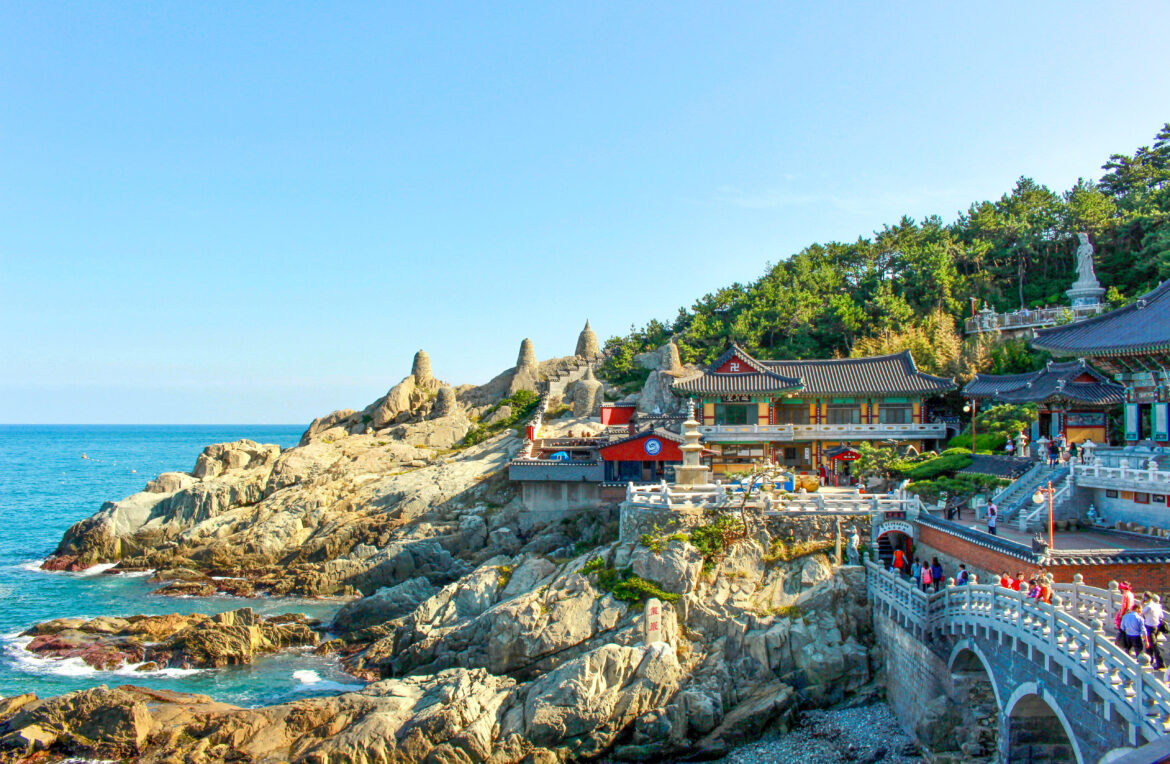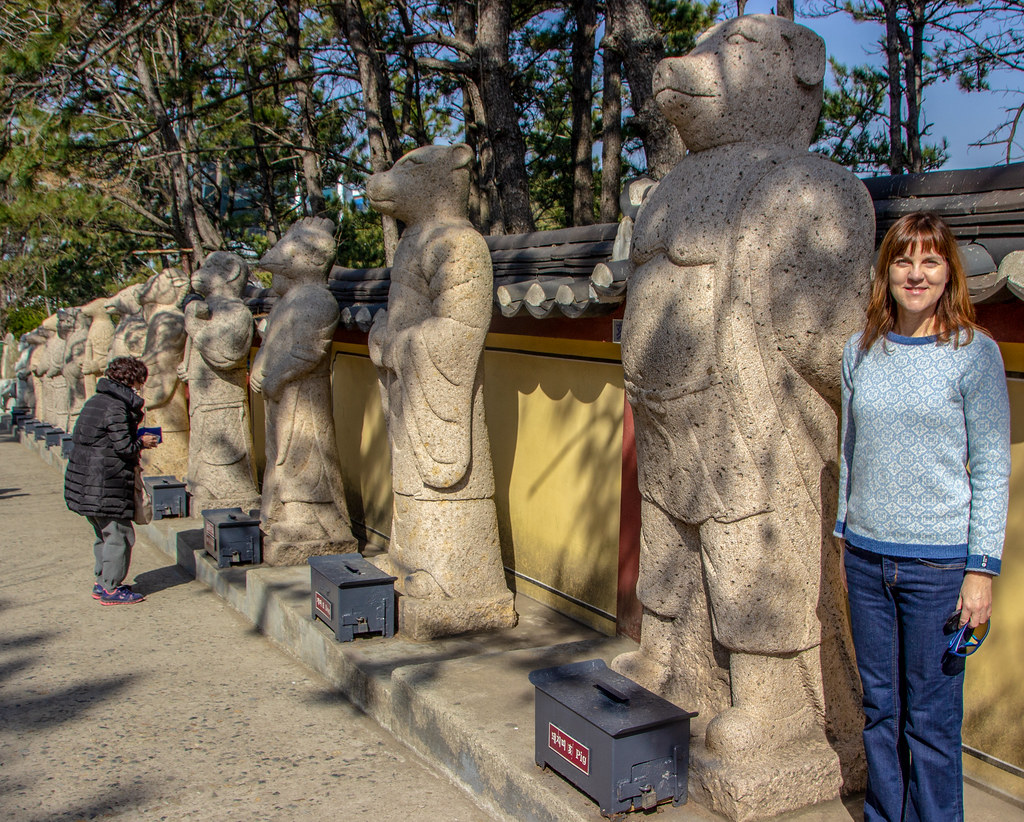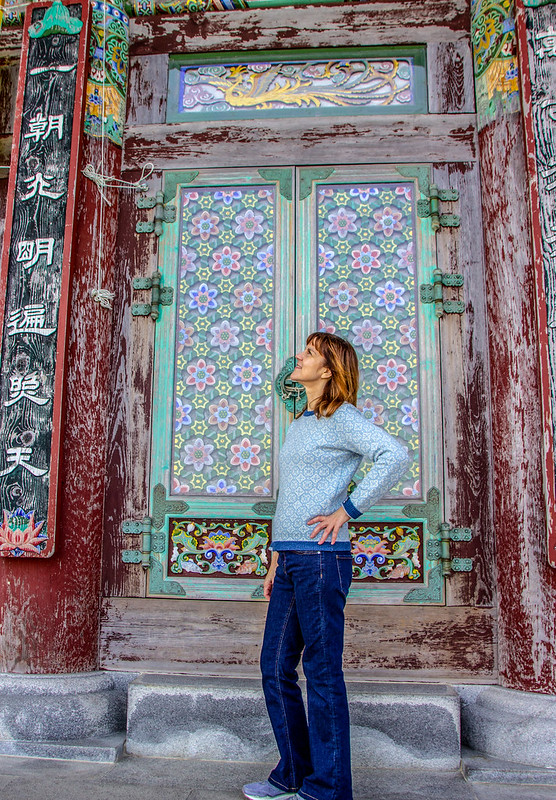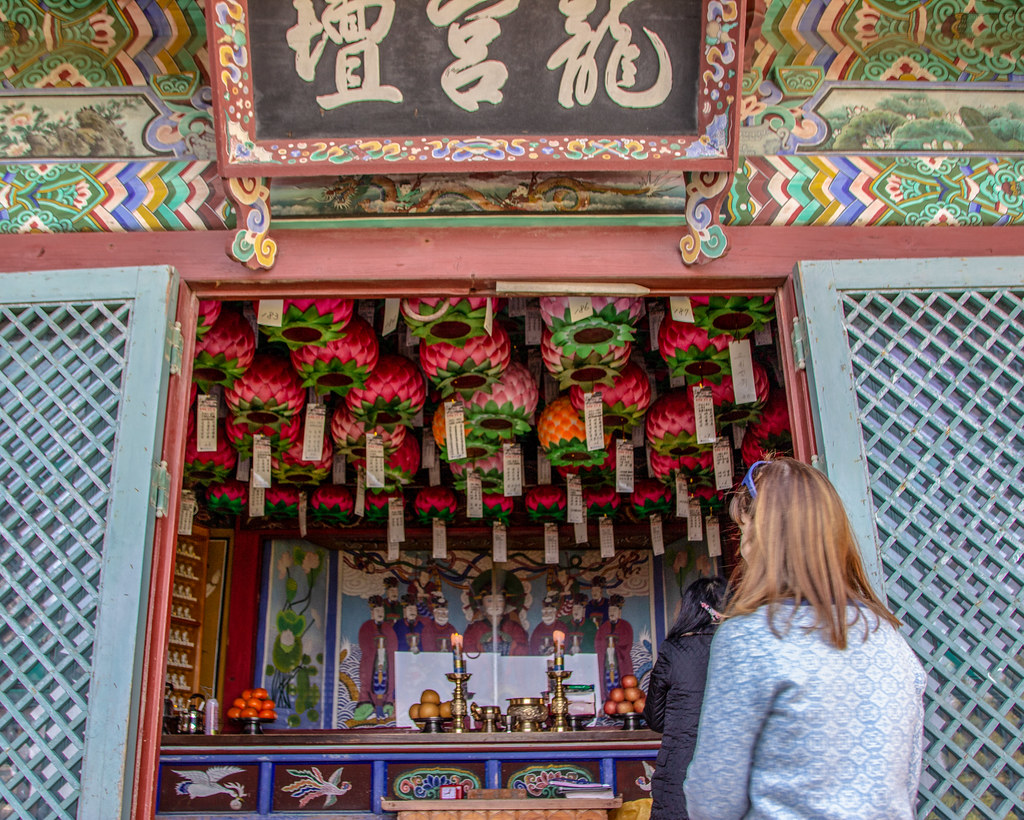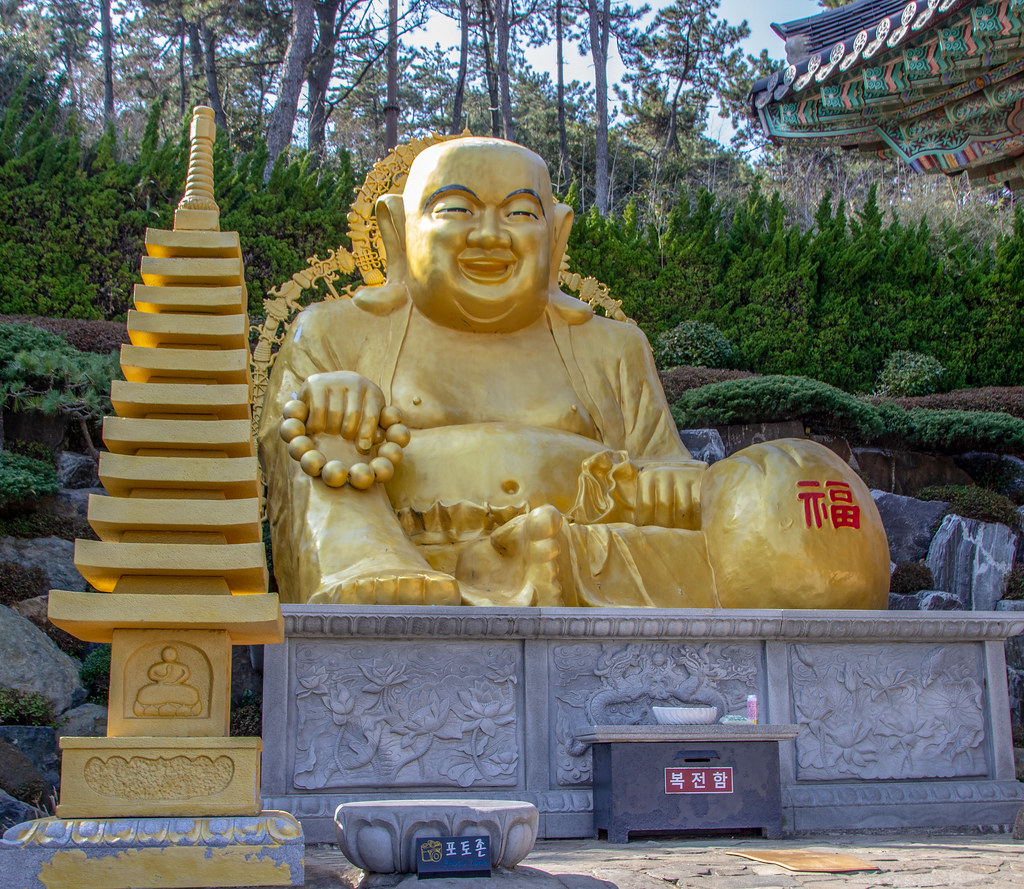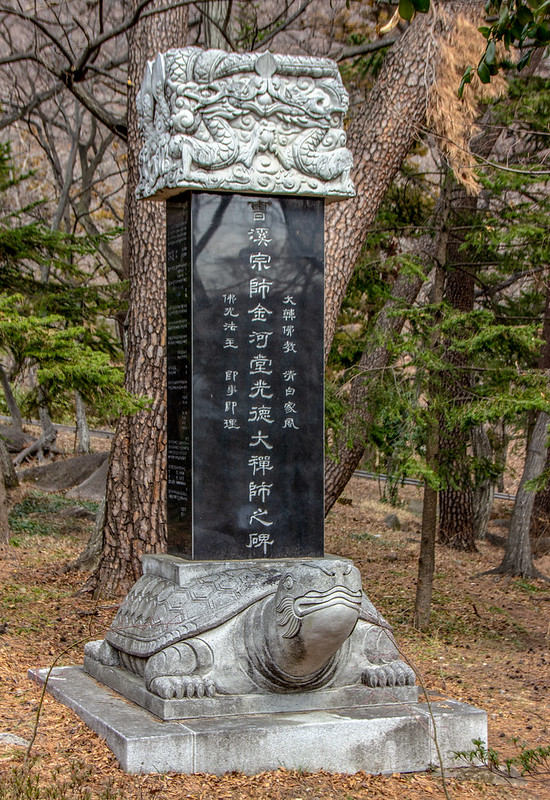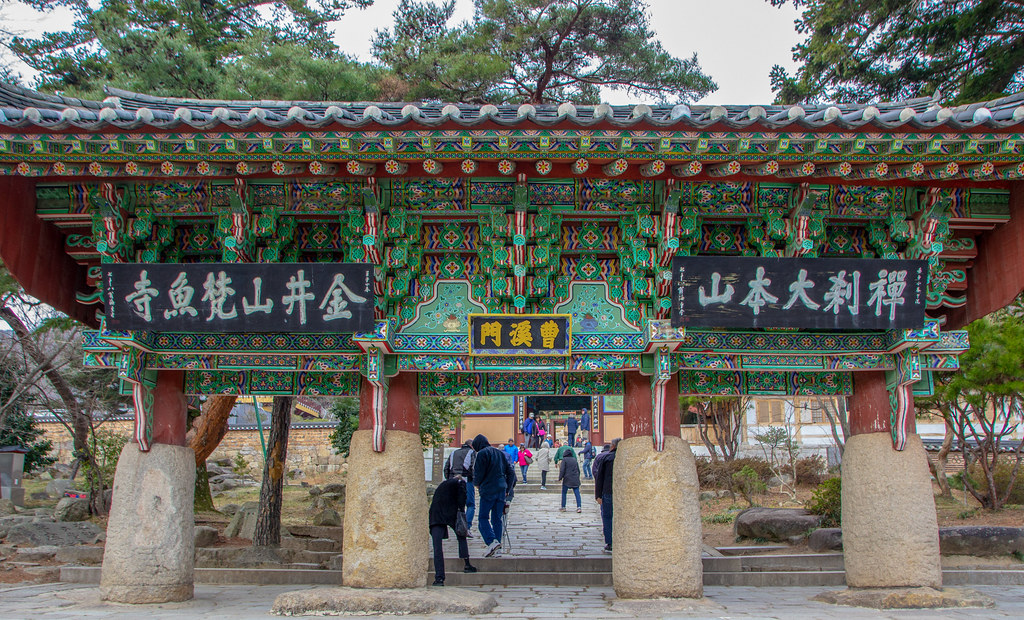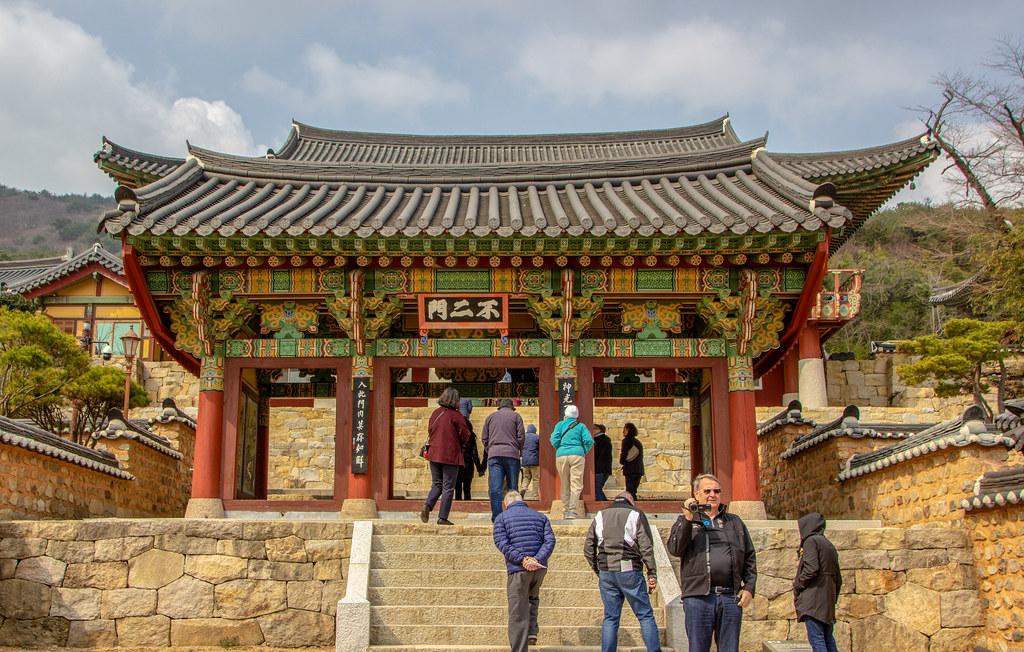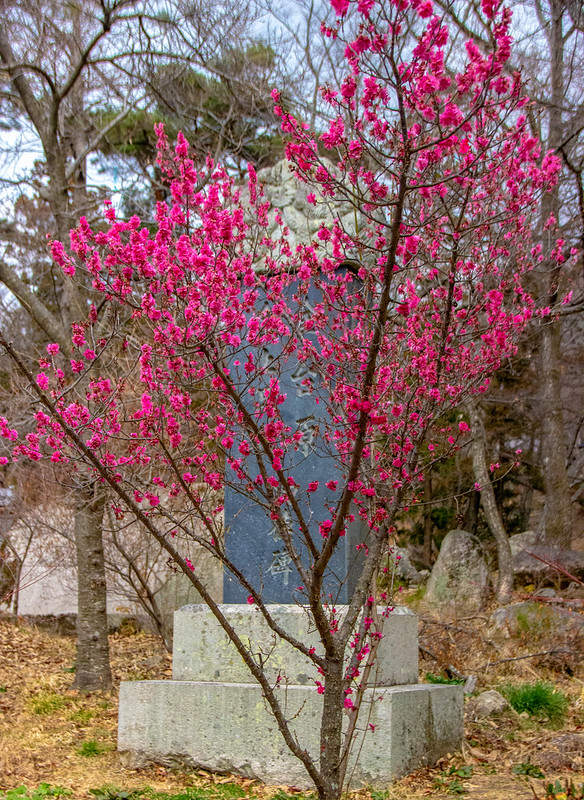Visiting South Korea would not be complete without going to one of their Buddhist temples near Busan (900 total in country). Most of them are nestled in mountains according to the harmony of pung-su or feng shui. Consequently, they provide visitors an opportunity to unplug from the modern WIFI world to connect with nature and the humbling principles of Buddhism for serenity. During my 2 spring days (at noon so photos not the best), I spent each day at a Buddhist temple near Busan: Haedong Yonggungsa by the sea and Beomeosa in the mountains. Also, most temples in Korea end in -sa meaning temple in Sino-Korean.
Follow my blog with Bloglovin
South Korean Buddhist Temples
I was inspired to discover that many Korean Buddhist temples near Busan offer templestays. They allow visitors to participate in the monastic Buddhist life in prayer, meditation, meals and sleeping arrangements. Buddhism was brought to Korea from China and has been practiced there for 1700 years. Korean temples follow a meditative form of Buddhism called Seon also known by Japanese as Zen. Furthermore, people from all backgrounds are welcome to do a temple stay and enjoy the many spiritual facets of this unique life.
Haedong Yonggungsa
“Korean Dragon Palace Temple”
My first day I go to the dramatic Haedong Yonggungsa, meaning “Korean Dragon Palace Temple” by the sea. This temple is more unique being along the shoreline, as most of the Korean temples are secluded in the mountains. First of all, we walk by a market with locals selling seafood, Korean cuisines and herbal medicines.
After that we enter a corridor greeted by the 12 large (taller than me) stone zodiac statues, according to Chinese and Korean Astrology. Then, we continue down steep stairs, embedded with bamboo trees and the sounds of waves crashing below. There are 108 steps to represent the 108 Buddhist sufferings. Finally, I step out into the open space, to an exhilarating feast for all senses. Here the architectural masterpiece is revealed as a seamless extension from the dramatic seacliff looking out into the infinite sea.
It’s a labyrinth walking throughout the beautiful dreamscape of natural beauty unfolding the paths of this divine venue. Evenmore, the feng shui of landscape and temple harmonize a balance of the elements. The essence interconnects with the surrounding lush greenery and turquoise waters. I walk on rocks, seeing flowers, pagodas, statues and over a bridge.
Next, I notice a wishing well and the giant gold Buddha facing the ocean. (right photo) Furthermore, the main sanctuary is painted with colorful walls and altar for me to make my blessings and prayers. I love this place and enjoy it immensely regardless of all the tourists frantically taking selfies. Above all, the invigorating vortex here seems to lap up all our egos into the ocean waves, resounding the truth that we are all connected and suffering from our unique attachments.
Beomeosa or “Temple of the Nirvana Fish”
My next day at Buddhist Temples near Busan, I enjoy one of the renowned Beomeosa or “Temple of the Nirvana Fish.” In contrast to the other temple by the sea, it’s built on the slopes of Geumieongsan, surrounded by trees and flowers. Additionally, they say this mountain has a large rock at the summit with a golden well, which never dries up. Consequently, it’s believed the water has magical properties, as a golden fish is said to have come here from heaven.
In 2011, the LA Times wrote an article about the Beomeosa monks’ fighting tradition, using martial arts techniques. Most importantly, these monks are famed for defeating Japanese invaders during the late 16th century and again during the Japanese occupation of Korea in the early 20th century.[3]
Pagodas, Sanctuaries, Stelae and Three Gates
The feng shui and harmony of this temple interwoven in nature is in itself the essence and wonder of this spiritual venue. Moreover, there are many tiers to this temple site with pagodas, statues, sanctuaries and gateways. Walking up the mountain after that, I see the stela slabs sporadically in the bush along the walkway, interspersed by blossoming apricot trees. Stela are stone slab monuments. (see left photo)
Furthermore, I go up the steep stairs, passing through 3 gateways to the main temple above: First of all, the gate is called One-Pillar Gate, because when viewed from the side the gate appears to have one pillar, symbolizing the one true path of enlightenment:
Secondly, the Gate of the Four Heavenly Kings houses the 4 kings guarding the entrance to the temple:
Thirdly, the Gate of Non-Duality takes you to the main temple compound, symbolizing the realms of Buddha and this world are the same:
The main temple has outside seating arranged for a very large audience. So, I walk throughout the complex to altars for prayer and give myself precious time to pause and just take in the beautiful scenery surrounding the temple.
Mt. Geumjeongsan and Beomeosa Temple
The spectacular scenery of Mt. Geumjeongsan and Beomeosa Temple are called the “three extraordinary sites of Beomeosa Temple” and “eight scenic wonders of Mt. Geumjeongsan.” Most noteworthy, the 3 extraordinary sites are the rock peak behind Wonhyoam Hermitage; two rocks in the shape of a chicken at Gyemyeongam Hermitage; and the legendary “golden well” on top of Mt. Geumjeongsan.
Moreover, the eight scenic wonders refer to the following: sound of the temple bell from Naewonam Hermitage, the pine forest around Eosan Bridge; moonlit autumn nights at Gyemyeongam Hermitage; rain at night at Cheongnyeonam Hermitage; listening to the mountain stream at Daeseongam Hermitage; late autumn foliage at Geumgangam Hermitage; view of the sea from Uisang Peak; and clouds encircling Godang Peak, the summit of Mt. Geumjeongsan.
Overall, Buddhist Temples near Busan
Finally, coming back down the stairs and leaving this peaceful realm was like waking up from a dream. Consequently, driving away we immerse back into traffic and using our cell phones. However, the memory lingers as a reminder to drop everything one day and return to the realm of Buddhist dreams. Perhaps, a temple stay awaits in my future. Then, I could truly experience and assimilate the essence of these sacred vortexes.
Read More!
Stunning Volcanic Landscapes & Gardens of Jeju Island
Beautiful Spirited Garden & Glass Garden Theme Park Tours at Jeju Island

